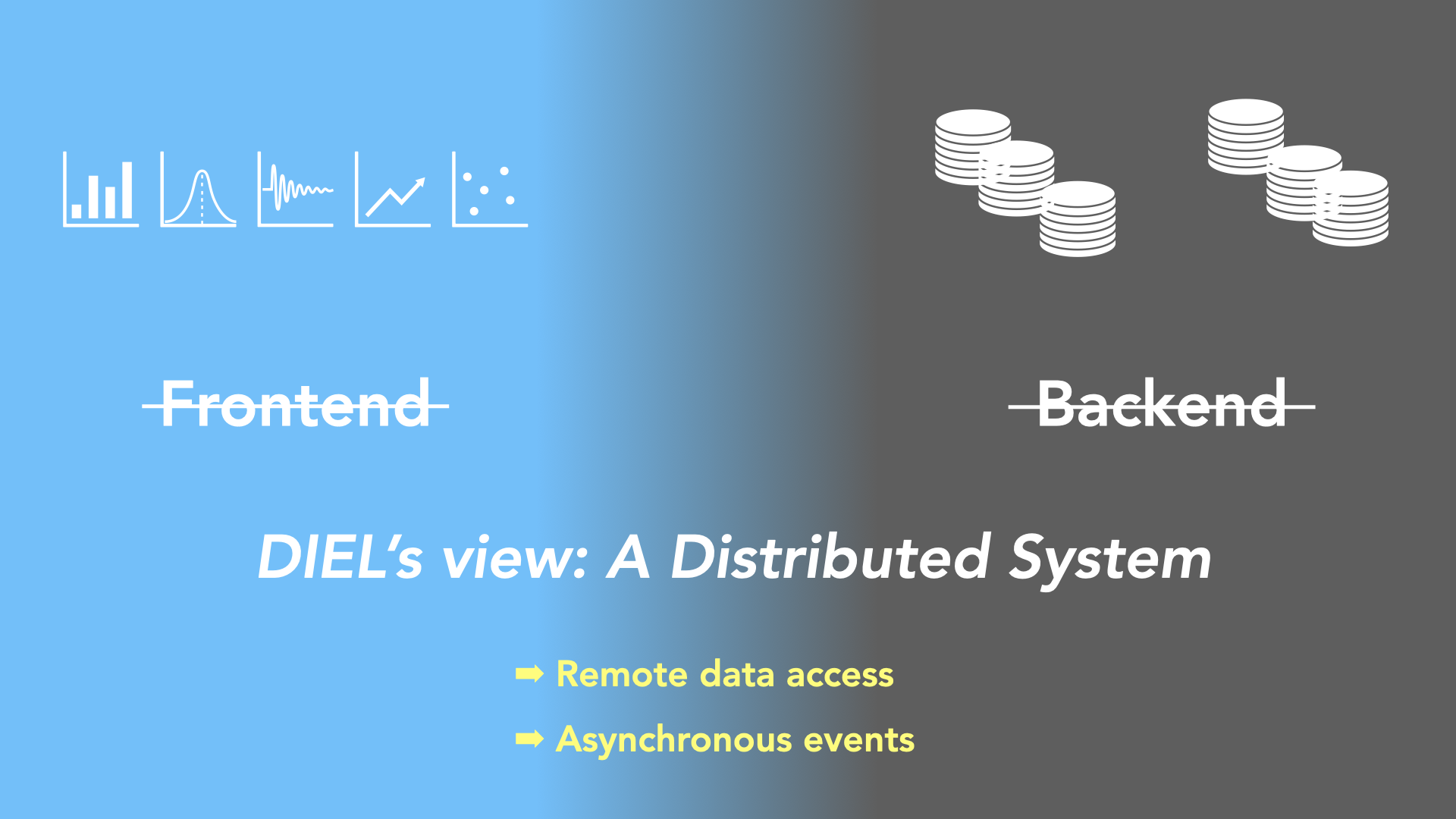DIEL: Interactive Visualization Beyond the Here and Now
Yifan Wu, Remco Chang, Joseph Hellerstein, Arvind Satyanarayan, Eugene Wu
External link (DOI)
View presentation:2021-10-27T13:45:00ZGMT-0600Change your timezone on the schedule page
2021-10-27T13:45:00Z

Fast forward
Direct link to video on YouTube: https://youtu.be/PB3D4RRI7Es
Abstract
Interactive visualization design and research have primarily focused on local data and synchronous events. However, for more complex use cases—e.g., remote database access and streaming data sources—developers must grapple with distributed data and asynchronous events. Currently, constructing these use cases is difficult and time-consuming; developers are forced to operationally program low-level details like asynchronous database querying and reactive event handling. This approach is in stark contrast to modern methods for browser-based interactive visualization, which feature high-level declarative specifications. In response, we present DIEL, a declarative framework that supports asynchronous events over distributed data. Like many declarative visualization languages, DIEL developers need only specify what data they want, rather than procedural steps for how to assemble it; uniquely, DIEL models asynchronous events (e.g., user interactions or server responses) as streams of data that are captured in event logs. To specify the state of a user interface at any time, developers author declarative queries over the data and event logs; DIEL compiles and optimizes a corresponding dataflow graph, and synthesizes necessary low-level distributed systems details. We demonstrate DIEL’s performance and expressivity through ex-ample interactive visualizations that make diverse use of remote data and coordination of asynchronous events. We further evaluate DIEL’s usability using the Cognitive Dimensions of Notations framework, revealing wins such as ease of change, and compromises such as premature commitments.